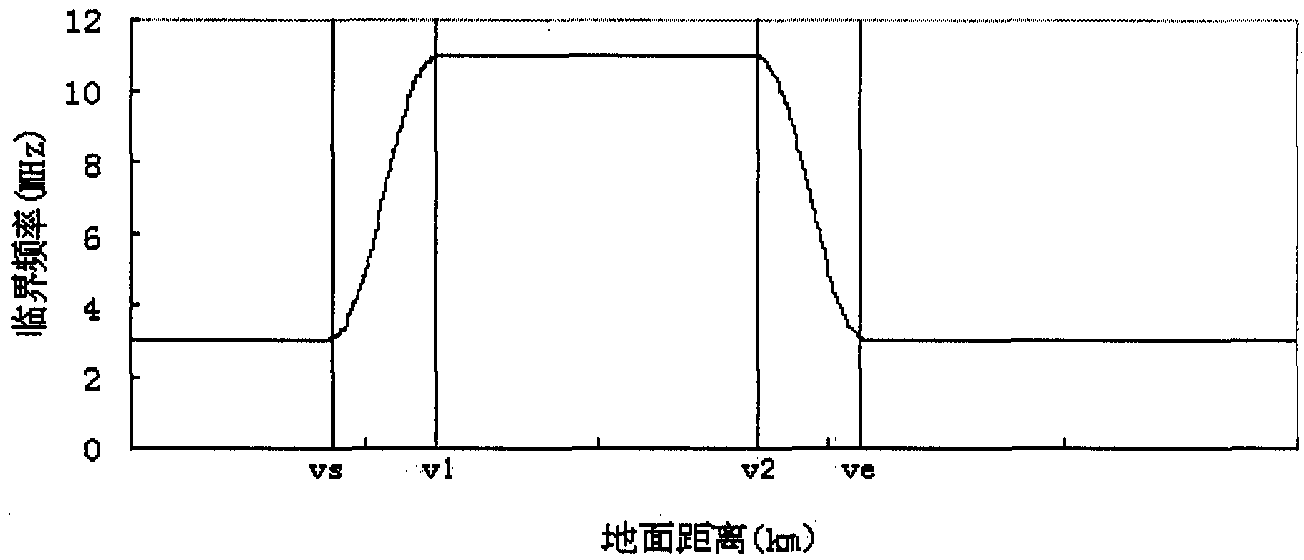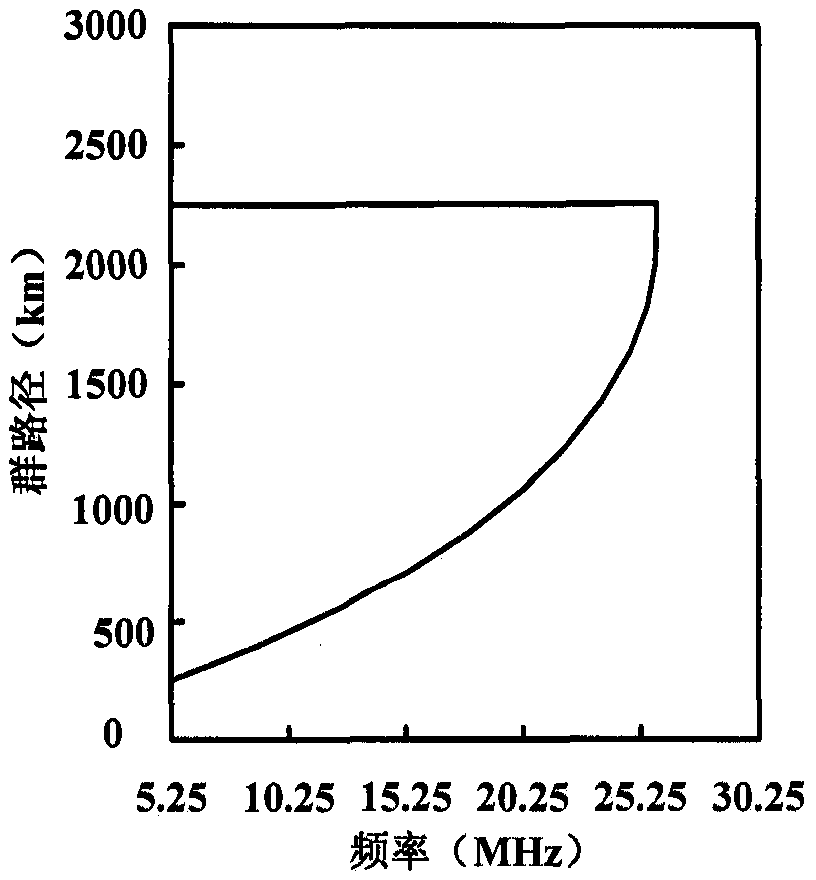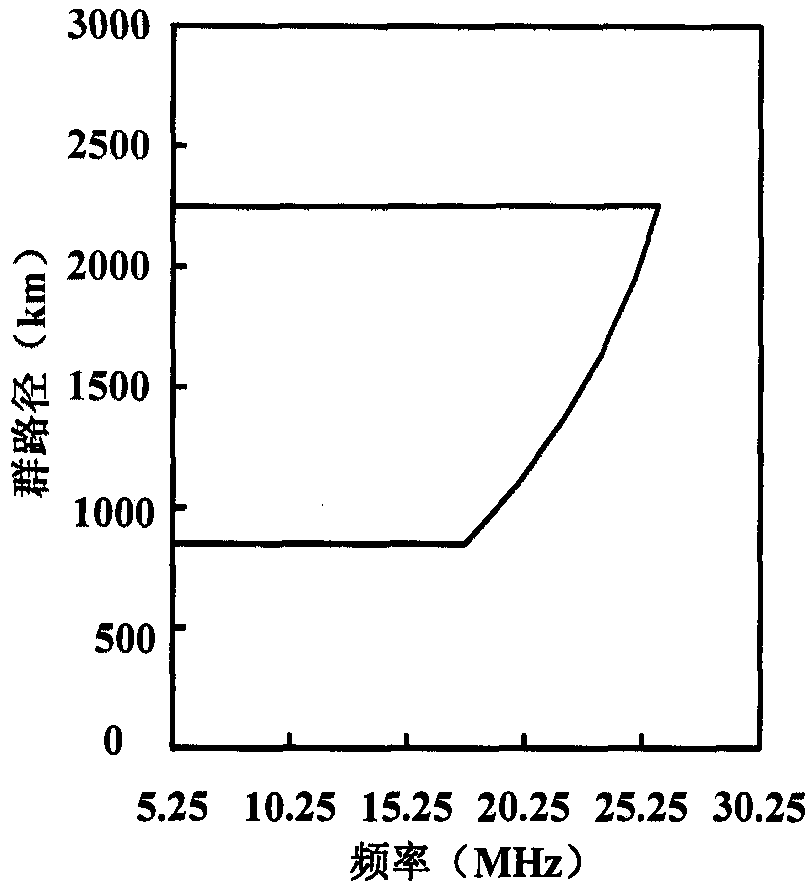A Method of Inverting es Layer Parameters Based on Backscattered Ionogram
A backscattering and ionogram technology, applied in the field of ionospheric physics research, can solve problems such as inability to meet the actual situation, and achieve the effect of meeting engineering needs
- Summary
- Abstract
- Description
- Claims
- Application Information
AI Technical Summary
Problems solved by technology
Method used
Image
Examples
example 1
[0062] Suppose the Es layer parameters are as follows: r m E. s = 90km, y m E. s = 0.8km, f c E. s = 4.5MHz. This is an Es layer with a medium electron concentration.
[0063] 1) There is an Es layer along the entire backscatter detection path
[0064] The Es layer exists along the entire backscatter detection path, which rarely occurs in practice, but to illustrate the problem, first consider the synthetic backscatter ionogram in this case. Assuming that the lowest elevation angle of the antenna is 0°, without considering the second hop, the farthest distance of backscatter detection is determined by the 0-degree ray. At this time, the synthesized backscatter ionization map is shown in the attached figure 2 shown. This situation is easy to understand, and the leading edge of the backscatter ionogram depends entirely on the QPS model parameters.
[0065] 2) The Es layer exists in an area about 413km away from the transmitter
[0066] In this case, the synthesized b...
example 2
[0070] Suppose the Es layer parameters are as follows: r m E. s = 100km, y m E. s = 1.0km, f c E. s =7.7MHz. This is an Es layer with a higher electron concentration.
[0071] 1) There is an Es layer along the entire backscatter detection path
[0072] The farthest distance of backscatter detection is determined by the 0-degree ray, since the critical frequency of Es is f c E. s = 7.7MHz, so frequencies lower than 7.7MHz are equivalent to vertical detection, so a fairly flat front is formed, and frequencies above 7.7MHz form a front determined by the QPS parameter. At this time, the edge profile of the synthesized backscatter ionogram as attached Figure 5 shown. Since the highest frequency of backscatter detection is generally up to 30MHz, the backscatter ionogram synthesized here only shows up to 30MHz.
[0073] 2) The Es layer exists in an area about 254km away from the transmitter
[0074] In this case, it can be seen that the ground distance of 254 km correspo...
PUM
 Login to View More
Login to View More Abstract
Description
Claims
Application Information
 Login to View More
Login to View More - R&D
- Intellectual Property
- Life Sciences
- Materials
- Tech Scout
- Unparalleled Data Quality
- Higher Quality Content
- 60% Fewer Hallucinations
Browse by: Latest US Patents, China's latest patents, Technical Efficacy Thesaurus, Application Domain, Technology Topic, Popular Technical Reports.
© 2025 PatSnap. All rights reserved.Legal|Privacy policy|Modern Slavery Act Transparency Statement|Sitemap|About US| Contact US: help@patsnap.com



